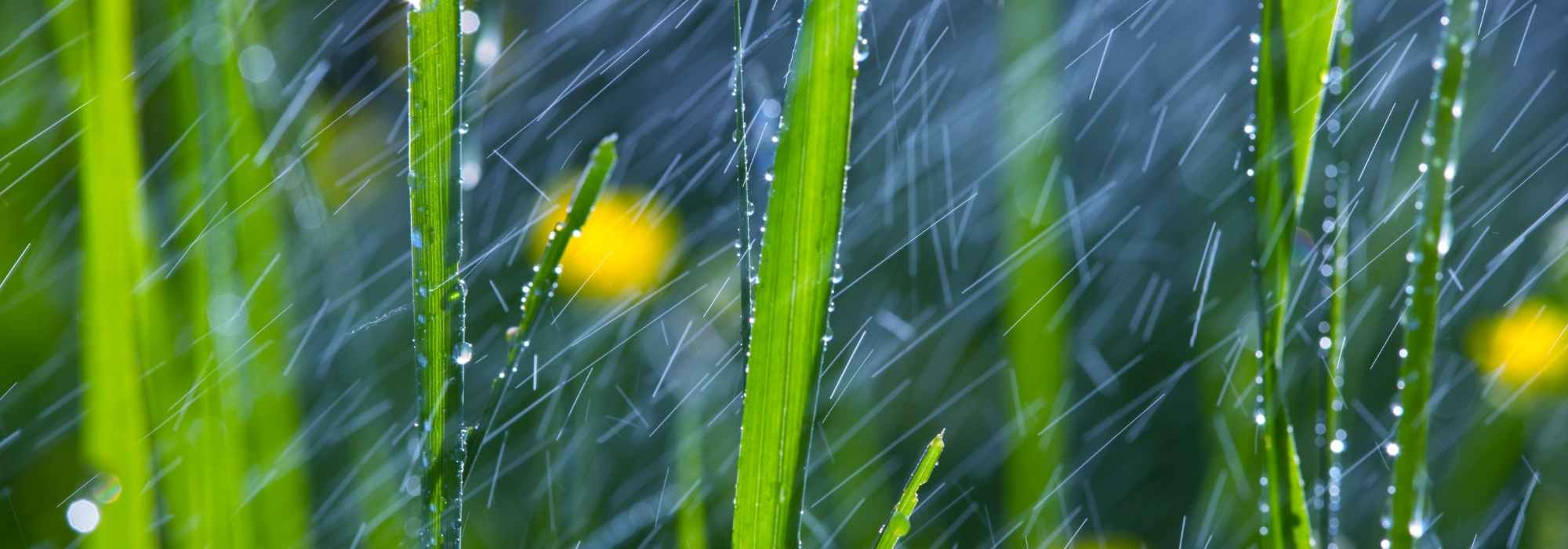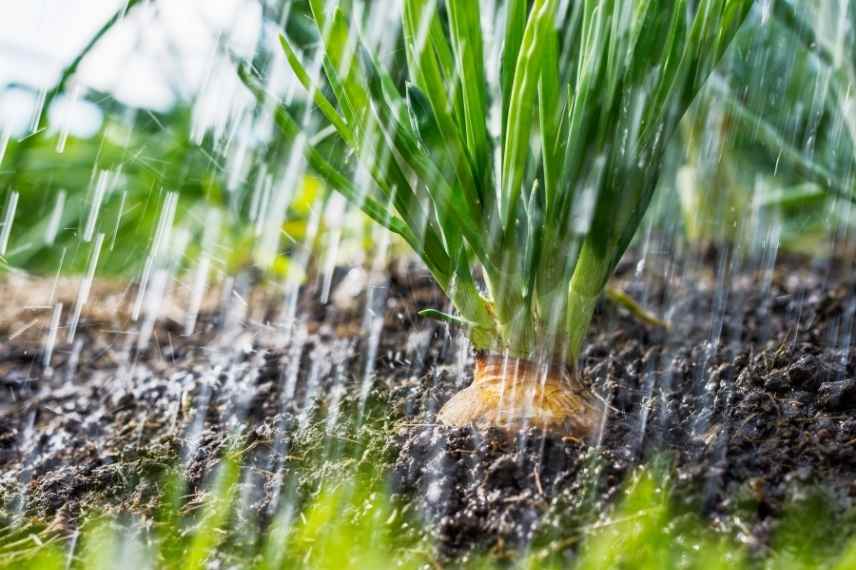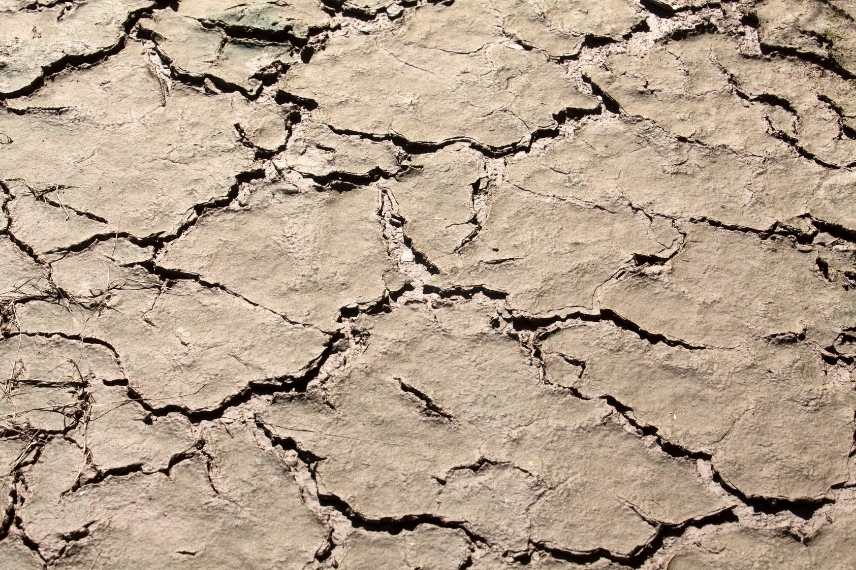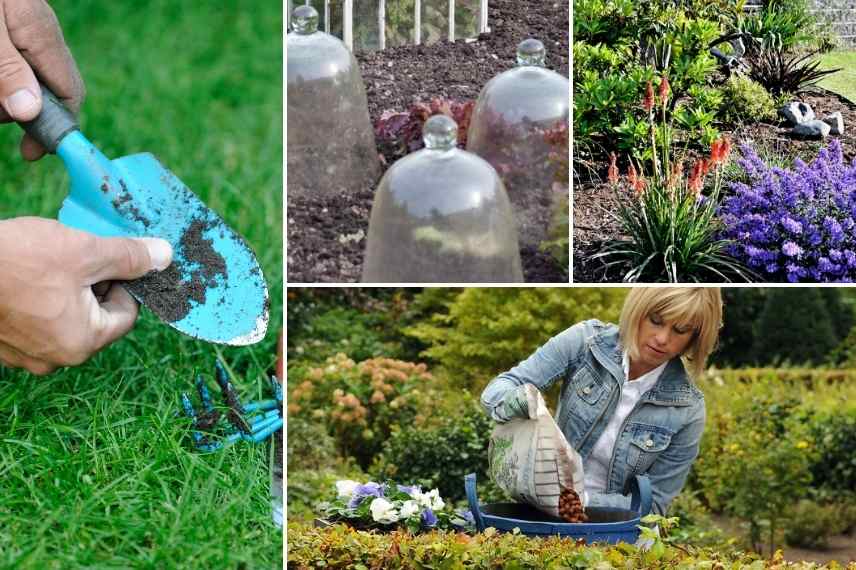
Heavy rain in the garden: how to manage?
No worries!
Contents
Rain in the garden is a blessing, but if it is too heavy, it can quickly become problematic, both in the vegetable garden and in the ornamental garden. With climate change, torrential rains will, in some areas, become commonplace. Additionally, many gardens in France and Belgium are cultivated on heavy, poorly drained clay soil. In short: it can sometimes be a disaster after heavy rain! So, what to do after a deluge? What can be done in advance to limit the damage?

Plants lie down
Some plants will suffer significant damage during heavy rain: perennials with long, fragile flowering stems (Sunflower, hollyhock…), grasses, or even tomato plants. The stems or inflorescences may lie flat on the ground or even break completely. What can be done to prevent this?
- The ideal solution is to stake the most fragile plants to keep them upright no matter what happens: bamboo stakes, poles found in the garden, plant rings, strings… Anything can be used to stake the plants. To learn all about staking perennials, follow Gwenaëlle’s good advice;
- A spring pruning, known as “Chelsea chop“, can be considered for many perennials: in May-June, cut back the non-flowering stems above a bud. The plant will then be sturdier, more compact, and therefore more resistant to the elements. Additionally, perennials treated this way will flower more abundantly;
- Choose robust plants: some perennials or annuals are naturally more compact or have been selected to produce strong stems. So choose your plants wisely!
- Consider placing your plants in sheltered spots: you can bring fragile potted plants indoors at the forecast of heavy rain or, particularly for the vegetable garden, grow them under a greenhouse or protection. This is especially true for tomatoes, which appreciate a little roof over their heads to avoid issues (diseases and broken stems), or young seedlings and transplants that will be well protected under a glass or plastic cloche.
If it’s too late and you can only assess the damage, you’ll need to roll up your sleeves:
- fallen plants can be lifted and staked if they are not too damaged;
- for sections that are severed or irreparably bent: you should cut them cleanly with pruning shears or garden scissors. Cut below the broken or bent part and above a bud. Remove damaged flowers and leaves. Perhaps the plant will have time to bloom again before winter;
- Gently shake some of your waterlogged plants to allow the water to drain more quickly and, consequently, reduce the weight on the vegetative part.
 The large flowers of peonies and dahlias often require staking to counteract the weight they bear during heavy rain
The large flowers of peonies and dahlias often require staking to counteract the weight they bear during heavy rain
Beware of crusting!
A crust of capping is the surface layer of soil that forms after rainfall and on bare soils, often following a dry spell. Raindrops break the soil into small particles (especially if the soil contains a lot of clay) that clump together to form an impermeable layer. Water can no longer infiltrate the soil. Water stagnates or runs off to a lower point, which can lead to flooding.
Moreover, as this crust of capping has become impermeable to water (from rain or watering), the soil will quickly become dry after rain and will be difficult to moisten. This is detrimental to plants in general, but especially to recent plantings, transplants, and sowings.
How to limit this phenomenon in the garden?
- Avoid leaving the soil bare: adopt groundcover plants or apply organic mulch on the soil;
- Exposed areas of soil should be regularly hoed or raked. Using a broadfork that works deeper while respecting soil life will be a good solution;
- Add organic matter to the soil: compost, dead leaves, straw… All these elements will improve the structure of your soil and help lighten it. This will enhance drainage and facilitate water movement. Avoid adding sand to your soil, as it often does more harm than good.
Please note: Soil leaching is also problematic. During heavy rainfall, water will wash away a significant portion of the soil’s mineral elements. A well-planted or mulched soil prevents such issues.

Beware of the spread of fungal diseases.
Humidity (and a relative mildness) brings its share of fungal diseases, that is to say, those caused by a fungus: downy mildew, botrytis, rust, powdery mildew…
It is difficult to guard against them, but a healthy plant, planted in conditions that suit it (exposure, humidity, climate, soil…) will be able to fight against diseases. However, in anticipation of severe weather, one can:
- Protect the plants, especially sensitive vegetables and small fruit trees, with cloches, shelters, tunnels, a raised tarpaulin… or a greenhouse;
- Ensure good air circulation between the plants: avoid planting too closely;
- Clean and disinfect your tools to prevent the spread;
- Treat preventively with horsetail or nettle manure which strengthens the plants;
- Improve soil drainage: by adding compost and, in more severe cases, by incorporating gravel or clay balls at planting;
- Grow varieties known to be resistant to diseases.
→ For everything you need to know about fungal diseases, read Marion’s article.
Please note: Beth Chatto liked to remind us of this saying “the right plant in the right place“. To avoid “getting it wrong” in your choice of plants, discover the new PlantFit application from Promesse de Fleurs.

Cleaning tools, using protective cloches, spaced plantings, drainage… all actions to combat humidity
A few other small tasks to do after heavy rain...
- Rake up fallen leaves, branches, and twigs from the soil if necessary;
- Collect fallen fruits prematurely to prevent the spread of disease;
- Upright any stakes that have collapsed;
- Empty water from the saucers of pots and planters: always remember to use containers with drainage holes;
- And never leave your tools outside: they will rust quickly. Store them away and take care of them!
- Subscribe!
- Contents
































Comments